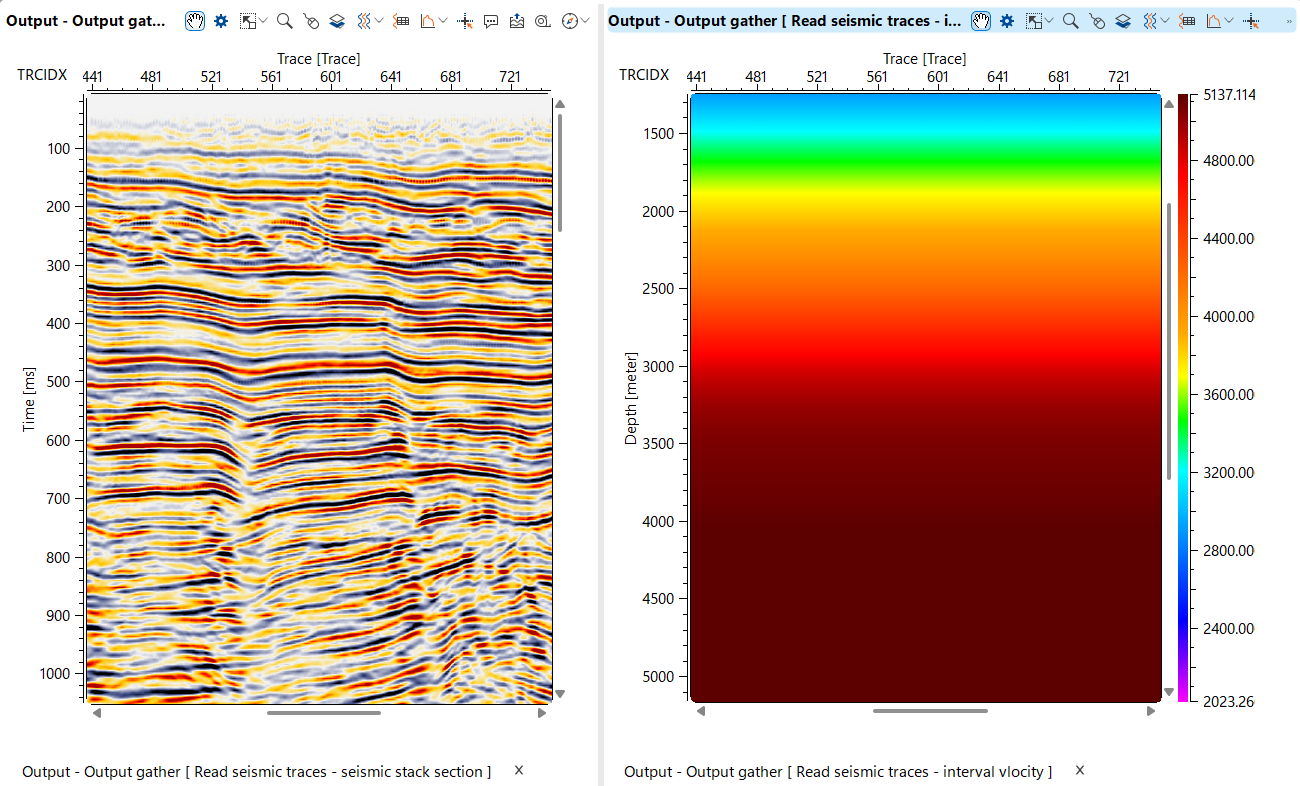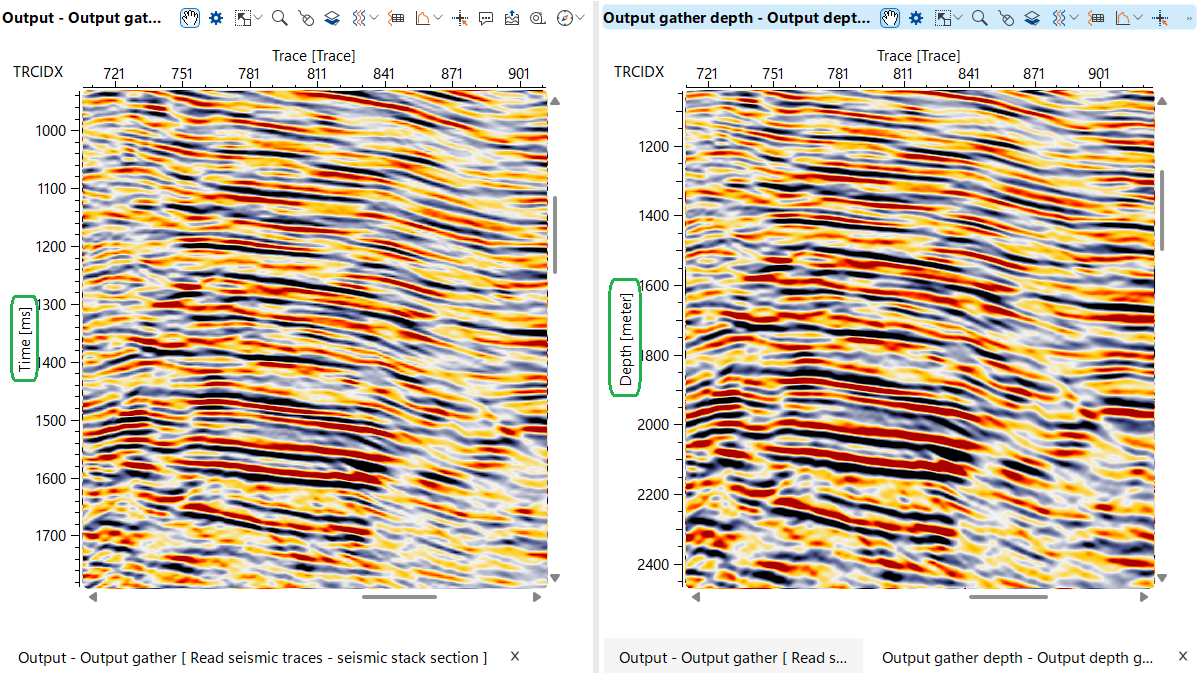Seismic data conversion (stretching) from Time domain to Depth domain.
![]()
![]()
The seismic data conversion module from time domain to depth domain is used to transform seismic time data (such as arrival times of seismic waves) into depth-related data corresponding to the Earth's subsurface layers. This process is essential for accurate modeling and analysis of geological structures, such as oil and gas reservoirs, and for conducting seismic exploration. The module works based on two input datasets: interval velocity data for each layer and the seismic time data. The conversion is performed by integrating the interval velocity with the time data, using a velocity-depth relationship, to translate the measured time into the corresponding depth.
![]()
![]()
Input time gather - input seismic data set in time domain.
Input velocity - interval velocity model.
![]()
![]()
V0 - replacement velocity m/s.
![]()
![]()
Number of threads - limit number of threads on main machine.
Skip - switch-off this module (do not use in the workflow).
![]()
![]()
Output depth gather - output gather in depth domain.
![]()
![]()
Workflow for time to depth conversion. There are two input data sets: seismic stack and interval velocity that are connected to the Stretching time to depth module:

Input seismic stack and interval velocity:

On the left there is an input seismic stack in time domain and on the right side this is seismic stack in depth domain:

![]()
![]()
YouTube video lesson, click here to open [VIDEO IN PROCESS...]
![]()
![]()
 If you have any questions, please send an e-mail to: support@geomage.com
If you have any questions, please send an e-mail to: support@geomage.com